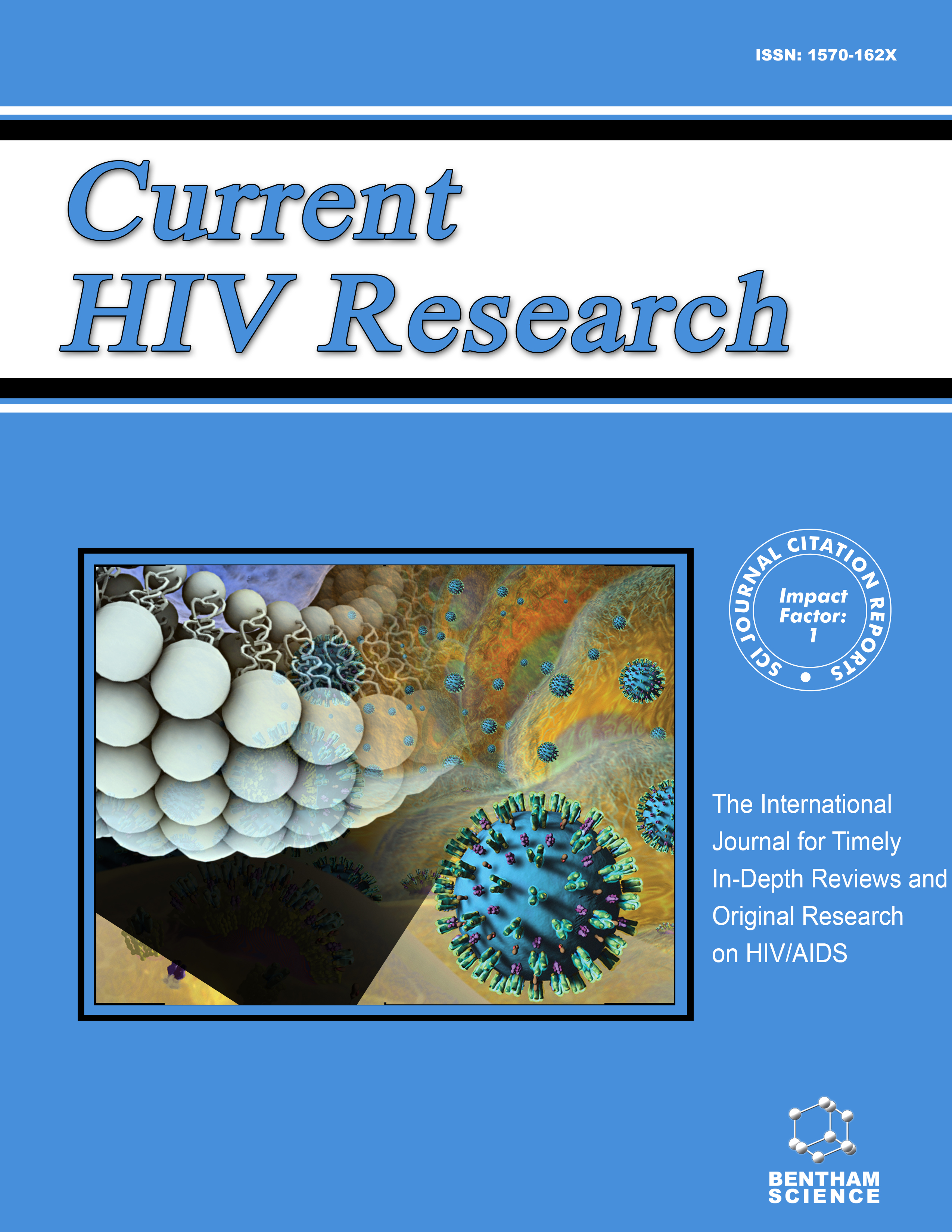- Home
- A-Z Publications
- Current HIV Research
- Previous Issues
- Volume 13, Issue 1, 2015
Current HIV Research - Volume 13, Issue 1, 2015
Volume 13, Issue 1, 2015
-
-
Conditional Tat Protein Brain Expression in the GT-tg Bigenic Mouse Induces Cerebral Fractional Anisotropy Abnormalities
More LessCerebral white matter changes including tissue water diffusion abnormalities detected with diffusion tensor magnetic resonance imaging (DTI) are commonly found in humans with Human Immunodeficiency Virus (HIV) infection, as well as in animal models of the disorder. The severities of some of these abnormalities have been reported to correlate with measures of disease progression or severity, or with the degree of cognitiv Read More
-
-
-
Chronic HIV-1 Tat and HIV Reduce Rbfox3/NeuN: Evidence for Sex- Related Effects
More LessAuthors: Yun Kyung Hahn, Ruturaj R. Masvekar, Ruqiang Xu, Kurt F. Hauser and Pamela E. KnappThe NeuN antibody has been widely used to identify and quantify neurons in normal and disease situations based on binding to a nuclear epitope in most types of neurons. This epitope was recently identified as the RNA-binding, feminizing locus on X-3 (Rbfox3), a member of the larger, mammalian Fox1 family of RNA binding proteins. Fox1 proteins recognize a unique UGCAUG mRNA motif and regulate alternative splicin Read More
-
-
-
HIV-1 Proteins, Tat and gp120, Target the Developing Dopamine System
More LessAuthors: Sylvia Fitting, Rosemarie M. Booze and Charles F. MactutusIn 2014, 3.2 million children (< 15 years of age) were estimated to be living with HIV and AIDS worldwide, with the 240,000 newly infected children in the past year, i.e., another child infected approximately every two minutes [1]. The primary mode of HIV infection is through mother-to-child transmission (MTCT), occurring either in utero, intrapartum, or during breastfeeding. The effects of HIV-1 on the central nervous system Read More
-
-
-
Mechanisms of HIV-1 Tat Neurotoxicity via CDK5 Translocation and Hyper-Activation: Role in HIV-Associated Neurocognitive Disorders
More LessThe advent of more effective antiretroviral therapies has reduced the frequency of HIV dementia, however the prevalence of milder HIV associated neurocognitive disorders [HAND] is actually rising. Neurodegenerative mechanisms in HAND might include toxicity by secreted HIV-1 proteins such as Tat, gp120 and Nef that could activate neuro-inflammatory pathways, block autophagy, promote excitotoxicity, oxidative stress, mito Read More
-
-
-
STAT3 and Its Phosphorylation are Involved in HIV-1 Tat-Induced Transactivation of Glial Fibrillary Acidic Protein
More LessAuthors: Yan Fan, Khalid Amine Timani and Johnny J. HeHuman immunodeficiency virus type 1 (HIV-1) Tat protein is a major pathogenic factor in HIV-associated neurological diseases; it exhibits direct neurotoxicity and indirect astrocyte-mediated neurotoxicity. We have shown that Tat alone is capable of activating glial fibrillary acidic protein (GFAP) expression and inducing astrocytosis involving sequential activation of early growth response protein 1 (Egr-1) and p300. In this s Read More
-
-
-
Didehydro-Cortistatin A Inhibits HIV-1 Tat Mediated Neuroinflammation and Prevents Potentiation of Cocaine Reward in Tat Transgenic Mice
More LessHIV-1 Tat protein has been shown to have a crucial role in HIV-1-associated neurocognitive disorders (HAND), which includes a group of syndromes ranging from undetectable neurocognitive impairment to dementia. The abuse of psychostimulants, such as cocaine, by HIV infected individuals, may accelerate and intensify neurological damage. On the other hand, exposure to Tat potentiates cocaine-mediated reward mechanis Read More
-
-
-
Cortical Consequences of HIV-1 Tat Exposure in Rats are Enhanced by Chronic Cocaine
More LessAuthors: Wesley N. Wayman, Lihua Chen, Amanda L. Persons and T. Celeste NapierThe life span of individuals that are sero-positive for human immunodeficiency virus (HIV) has greatly improved; however, complications involving the central nervous system (CNS) remain a concern. While HIV does not directly infect neurons, the proteins produced by the virus, including HIV transactivator of transcription (Tat), are released from infected glia; these proteins can be neurotoxic. This neurotoxicity is thought to m Read More
-
Volumes & issues
-
Volume 22 (2024)
-
Volume 21 (2023)
-
Volume 20 (2022)
-
Volume 19 (2021)
-
Volume 18 (2020)
-
Volume 17 (2019)
-
Volume 16 (2018)
-
Volume 15 (2017)
-
Volume 14 (2016)
-
Volume 13 (2015)
-
Volume 12 (2014)
-
Volume 11 (2013)
-
Volume 10 (2012)
-
Volume 9 (2011)
-
Volume 8 (2010)
-
Volume 7 (2009)
-
Volume 6 (2008)
-
Volume 5 (2007)
-
Volume 4 (2006)
-
Volume 3 (2005)
-
Volume 2 (2004)
-
Volume 1 (2003)
Most Read This Month
Article
content/journals/chr
Journal
10
5
false
en


